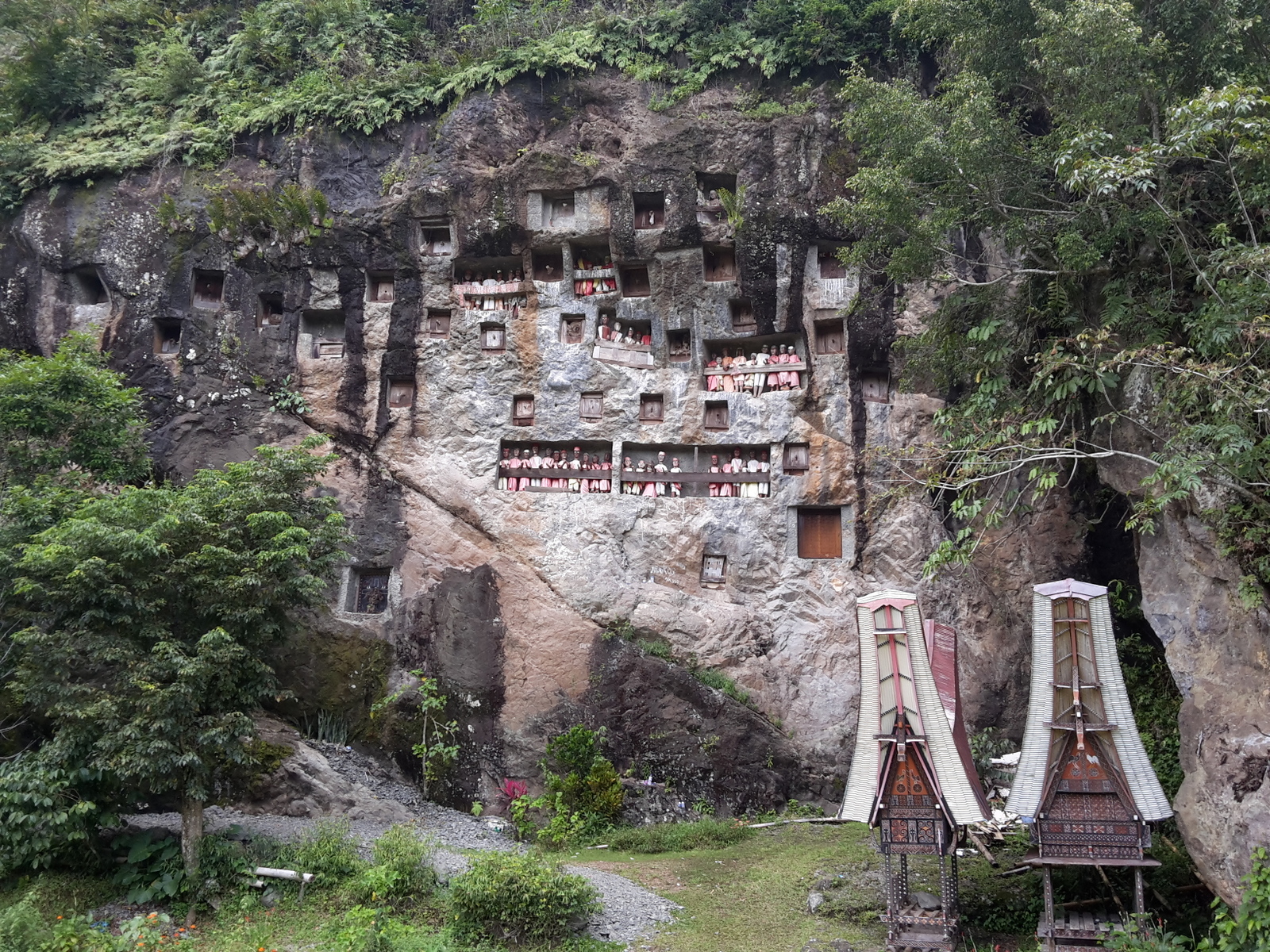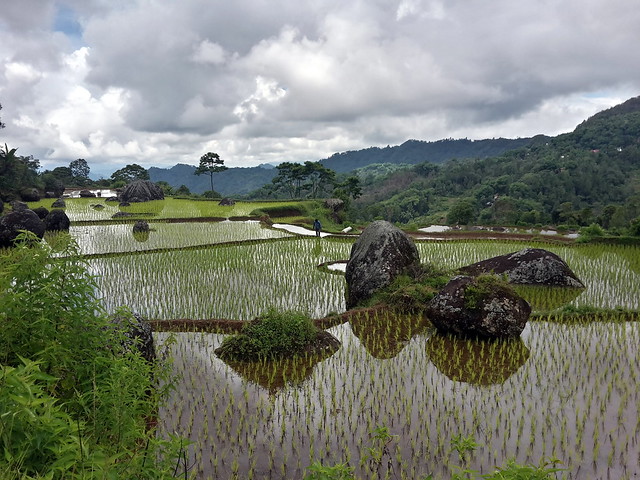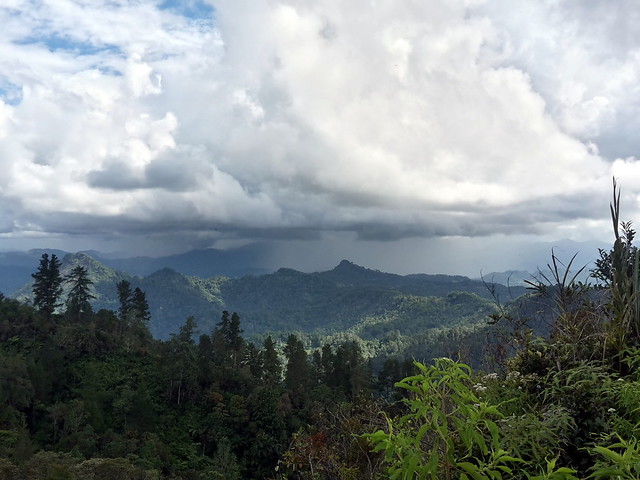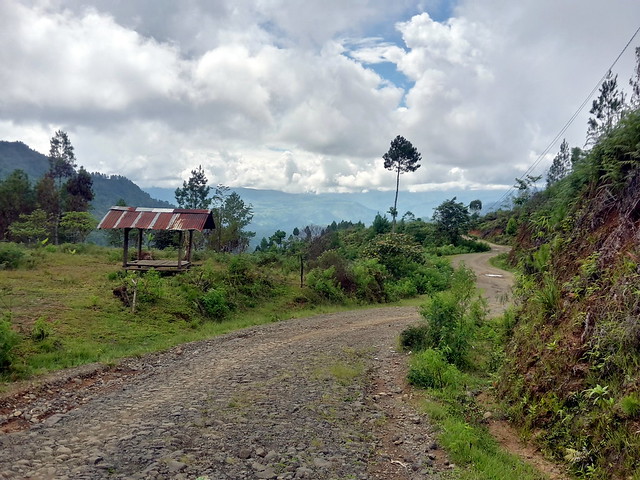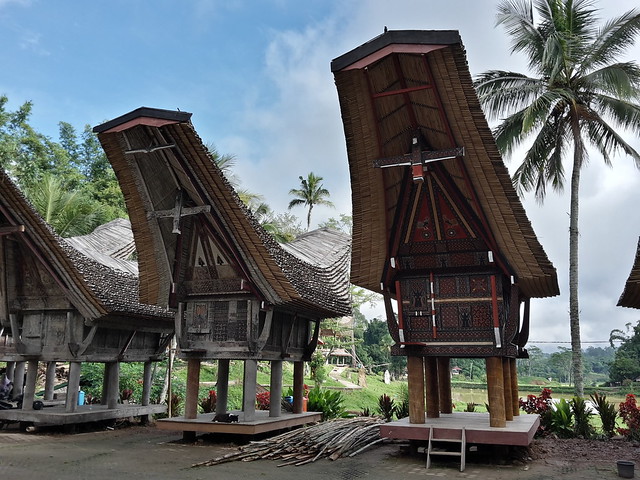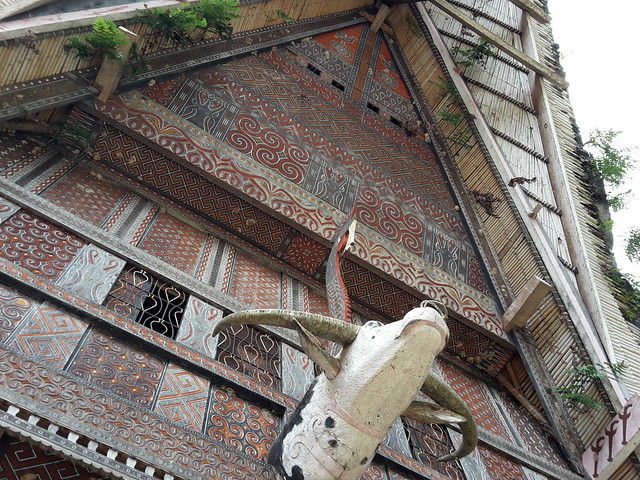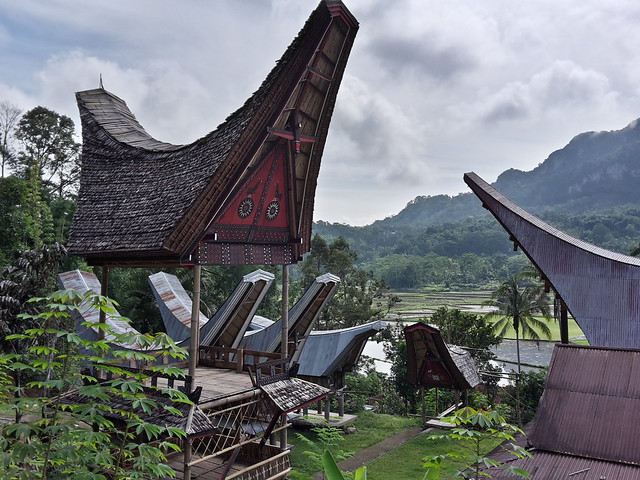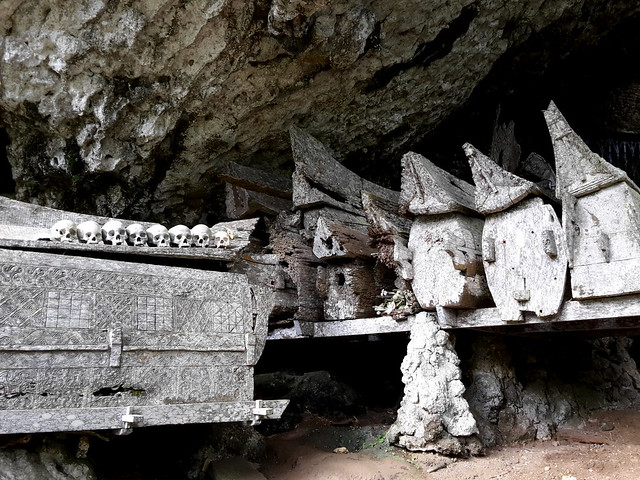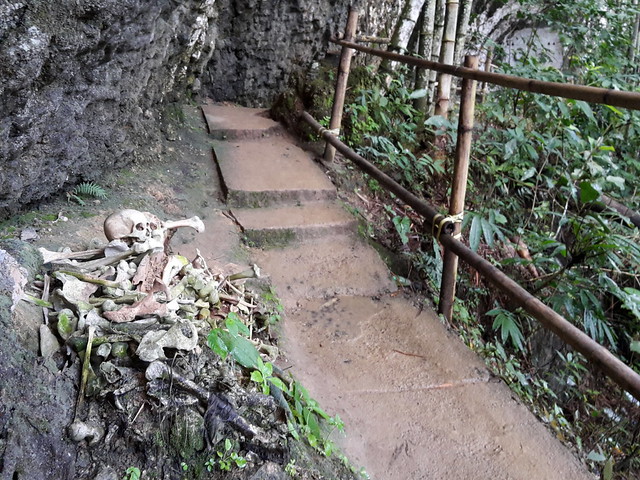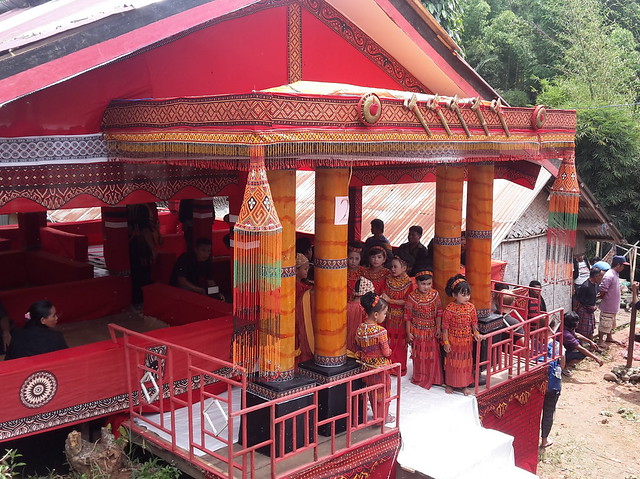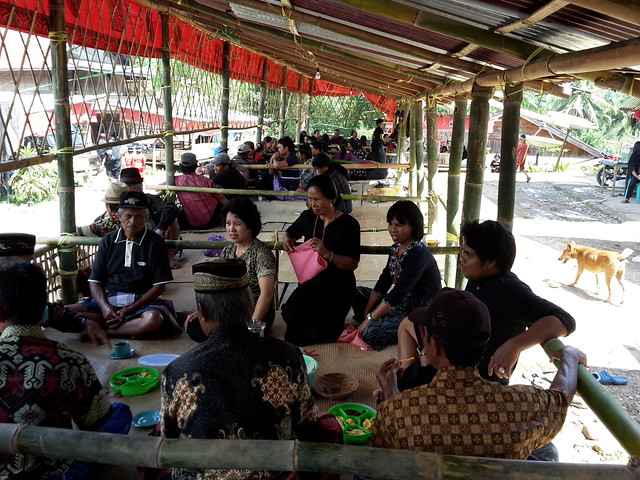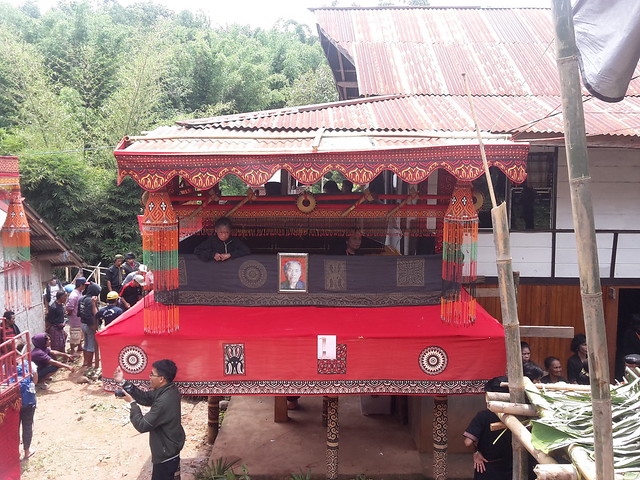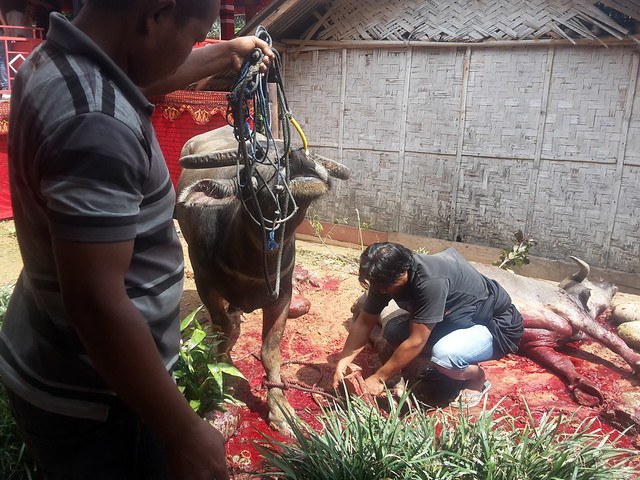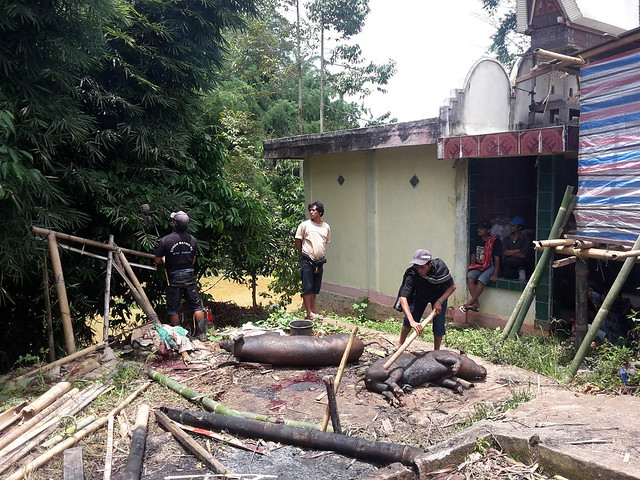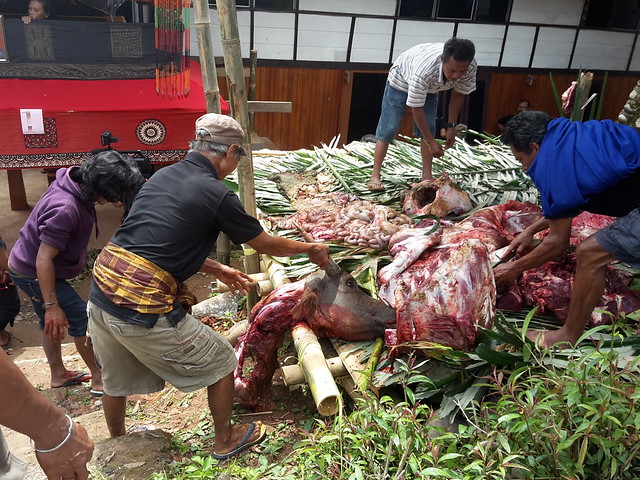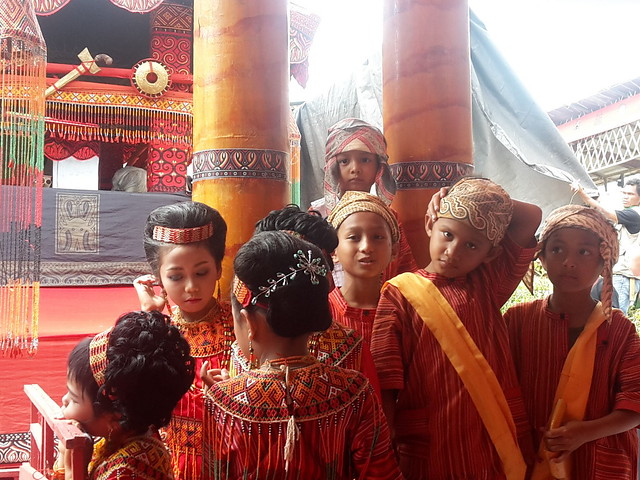In the center of Sulawesi lies a region called Tana Toraja. Villages and settlements are hidden away in green rolling hills, connected only by winding roads that follow high ridges or cut through valleys of lush rain forest. Muddy tracks lead off these roads, to access an amazing patchwork of rice paddies which seem to have been established wherever the land allowed for it.
The atmosphere is serene and peaceful, people are working in the fields, but happy to interrupt for a friendly smile or to wave at me when I am passing by on my rented scooter. Buffaloes are grazing in the fields, it is idyllic. And also the local architecture is unique and beautiful: Wooden houses built on stilts carry long roofs made of straw or corrugated iron. These protrude on the far ends of the rectangle buildings and are shaped in a graceful upward curve, reminding me of boats.
And everything is artistically painted with earthen colors, displaying complicated and fascinating patterns. These houses rarely stand alone, but are mostly accompanied by at least a few smaller versions, used for storing rice and by their number and decoration indicating the family’s status.
***WARNING: Some of the following picures may be disturbing***
But beneath this serene and peaceful surface lies something that is always present and must make up the core of the people’s lives and motivations: death. I did not stay long enough to fully understand the local beliefs, rites and rituals, but here is what I’ve gathered: The people in Tana Toraja are Christian (there are crosses everywhere) but they also follow their animist beliefs that developed long before the Dutch missionaries came to the island. The Torajans don’t bury their deceased under the earth, but rather in caves, rock tombs, or hang their coffins from cliffs. Wealthy families put painted live-sized carvings of the dead in front of their tombs, and since the coffins are exposed to wind and rain and eventually decompose, the sculls and bones of many generations just lie scattered on the ground at these burial sites…
And then there are the funerals. Depending on the social status of a family they have to slaughter a certain number of buffaloes – from a minimum of three for lower class to at least 24 for high class deceased. Albino buffaloes gain extra prestige and are traded for the price of a new car on the local market. The people here are not rich and usually do not earn a lot, so months (or even years!) may pass before the funeral ceremony can finally take place. In the meantime the body gets treated to prevent decay, and is stored in the living room – it is still part of daily life and not considered dead, just sleeping.
I went to one of these funerals and was amazed by the scale of the event: Several buildings had been erected, just to accomodate all the visitors that would show up over the course of the four days of the event.
Everyone was received by the hosting family and then served hot drinks and snacks. The coffin had been put in an elevated spot, behind a picture of the deceased.
But otherwise it did not feel like the event was about that person at all: There was no ceremony to speak of; it seemed to me to be more about the buffaloes and the pigs that were brought as presents: When I arrived people just got ready to cut the second buffaloes throat (which was a very bloody spectacle indeed!).
The pigs were also killed and treated with flame-throwers, then the animals were skinned and the still warm (and twitching) meat got cut into big chunks and piled up next to the road.
These slaughterings happened in a matter of minutes; everyone here seemed to be a butcher! Others started to work on the chunks and turned them into smaller pieces which were then distributed to the guests, following a complicated system of restitution, I was told. To me it felt like people had totally forgotten about the funeral, all the attention was focused on preparing and distributing the meat. It was an experience to have seen such a festival, but it left me perplexed and a little sad: So much energy, so many resources were used on a thing that (at least to me) means something entirely different…
